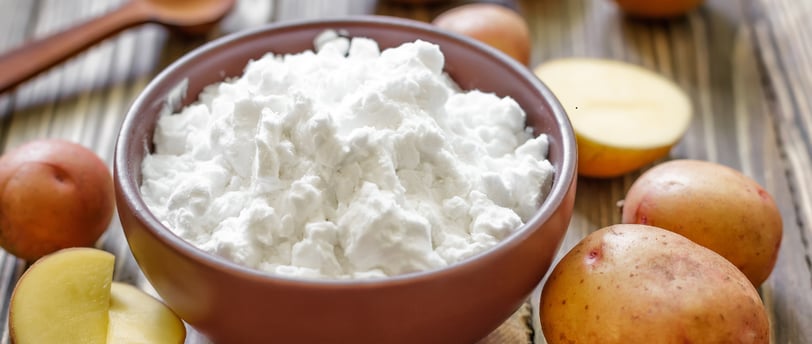Resistant Starch: The Carb That Actually Improves Insulin Sensitivity
Discover how resistant starch - the one carb that actually improves insulin sensitivity - can help reverse type 2 diabetes naturally. Learn the science, best food sources, and safe implementation protocol
6/13/20255 min read


Resistant Starch: The Carb That Actually Improves Insulin Sensitivity
You've been told to avoid carbs if you have type 2 diabetes, right?
I get it. For years, the diabetes community has been hammering this message: carbs spike blood sugar, so cut them out completely.
But here's the thing – there's one type of carb that actually does the opposite. It doesn't spike your blood sugar. Instead, it helps your body become more sensitive to insulin.
I'm talking about resistant starch.
And if you're not eating it, you're missing out on one of nature's most powerful tools for reversing type 2 diabetes naturally.
What Is Resistant Starch (And Why Should You Care)?
Let me break this down for you.
Resistant starch is exactly what it sounds like – starch that resists digestion in your small intestine. Instead of being broken down into glucose like regular starch, it passes through to your large intestine completely intact.
Here's where it gets interesting.
Once resistant starch reaches your colon, your gut bacteria feast on it. This process creates short-chain fatty acids (SCFAs) like butyrate, propionate, and acetate.
These SCFAs are metabolic game-changers for people with diabetes.
A study published in the journal Diabetes Care showed that people who consumed 40 grams of resistant starch daily for 12 weeks saw their insulin sensitivity improve by 33%. That's better than many diabetes medications.
The Science Behind Why Resistant Starch Works
Most people don't realize that insulin resistance doesn't just happen in your muscles and liver. It also happens in your gut.
When you eat resistant starch, several things happen:
Your gut bacteria produce more butyrate. Butyrate is like rocket fuel for your intestinal cells. It helps repair your gut lining and reduces inflammation throughout your body. Less inflammation means better insulin sensitivity.
Your liver starts producing less glucose. The SCFAs from resistant starch send signals to your liver to dial down glucose production. This is why many people see lower fasting blood sugar after adding resistant starch to their diet.
Your muscles become more efficient at using glucose. Research shows that resistant starch increases something called GLUT4 transporters in your muscle cells. These are the "doors" that let glucose enter your muscles instead of staying in your bloodstream.
But here's the kicker – you have to eat it the right way.
The 4 Types of Resistant Starch (And Which Ones Matter Most)
Not all resistant starch is created equal. There are four main types:
Type 1 (RS1): Found in whole grains, seeds, and legumes. It's physically trapped by fiber and protein, so digestive enzymes can't reach it.
Type 2 (RS2): Found in raw potatoes, green bananas, and plantains. This is the most studied type for diabetes benefits.
Type 3 (RS3): Created when you cook and then cool starchy foods like potatoes, rice, and pasta. The starch molecules reorganize into a resistant form.
Type 4 (RS4): Chemically modified starches found in processed foods. Skip these – they don't offer the same benefits.
For diabetes reversal, focus on Types 2 and 3. These are the ones that consistently show benefits in research studies.
My Top 5 Resistant Starch Foods for Diabetics
Here are the foods I recommend to my clients who want to add resistant starch to their diet:
1. Cooked and cooled potatoes: One medium potato cooked and cooled overnight contains about 4-5 grams of resistant starch. The cooling process is crucial – it allows the starch to crystallize into the resistant form.
2. Green bananas: A medium green banana has about 12-15 grams of resistant starch. As bananas ripen, the resistant starch converts to regular starch, so greener is better.
3. Cooked and cooled white rice: One cup of cooked rice that's been cooled contains about 1-2 grams of resistant starch. Not huge amounts, but every bit helps.
4. Legumes: Black beans, lentils, and chickpeas are excellent sources. A half-cup serving provides 2-4 grams of resistant starch.
5. Raw potato starch: This is the most concentrated source. One tablespoon contains about 8 grams of resistant starch. Start with 1 teaspoon and work up slowly to avoid digestive upset.
How to Add Resistant Starch Without Spiking Blood Sugar
This is where most people mess up.
They think, "Great, I can eat potatoes and rice again!" and go overboard.
Here's my protocol for adding resistant starch safely:
Start small. Begin with 5-10 grams per day. Your gut bacteria need time to adjust. Too much too fast leads to gas, bloating, and digestive discomfort.
Time it right. Eat resistant starch with meals that contain protein and fat. This slows digestion and prevents blood sugar spikes from any regular starch that might be present.
Monitor your response. Check your blood sugar 2 hours after eating resistant starch foods. Everyone responds differently, so track your individual response.
Cool it completely. If you're using cooked and cooled starches, make sure they're completely cool. Reheating destroys the resistant starch structure.
Be patient. The insulin sensitivity benefits take 2-4 weeks to show up. Don't expect overnight miracles.
The Mistake That Sabotages Your Results
Here's what I see happen all the time:
Someone reads about resistant starch, gets excited, and immediately starts eating large portions of potatoes and rice.
Their blood sugar spikes.
They panic and assume resistant starch doesn't work for them.
The problem? They're eating too much regular starch along with the resistant starch.
Remember, even cooked and cooled potatoes still contain regular starch. A large potato might have 4 grams of resistant starch, but it also has 30+ grams of regular starch.
Start with small portions. A quarter of a medium potato. Two tablespoons of cooked and cooled rice. Work up gradually as your blood sugar control improves.
Real Results from Real People
I've been recommending resistant starch to my clients for three years now. The results consistently surprise me.
Sarah, a 58-year-old teacher, saw her fasting blood sugar drop from 145 to 118 mg/dL after adding 2 tablespoons of raw potato starch to her morning smoothie for 6 weeks.
Mike, a 62-year-old retiree, reduced his post-meal blood sugar spikes by an average of 23 points after incorporating cooked and cooled potatoes into his lunch routine.
The key is consistency and patience.
Your Next Steps
If you want to try resistant starch, here's what I recommend:
Week 1: Add 1 teaspoon of raw potato starch to a protein smoothie daily. Check your blood sugar response.
Week 2: If tolerated well, increase to 1 tablespoon of raw potato starch or try a quarter of a cooked and cooled potato with dinner.
Week 3-4: Continue monitoring and slowly increase if your blood sugar remains stable.
Track everything. Log your food, blood sugar readings, and how you feel. This data will help you optimize your approach.
Remember, resistant starch isn't a magic bullet. It's one tool in your diabetes reversal toolkit. Combined with the right diet, exercise, and lifestyle changes, it can be incredibly powerful.
But like everything else in diabetes management, individual responses vary. What works for one person might not work for another.
The only way to know if resistant starch will help you is to try it systematically and track your results.
Your body will tell you if it's working.
